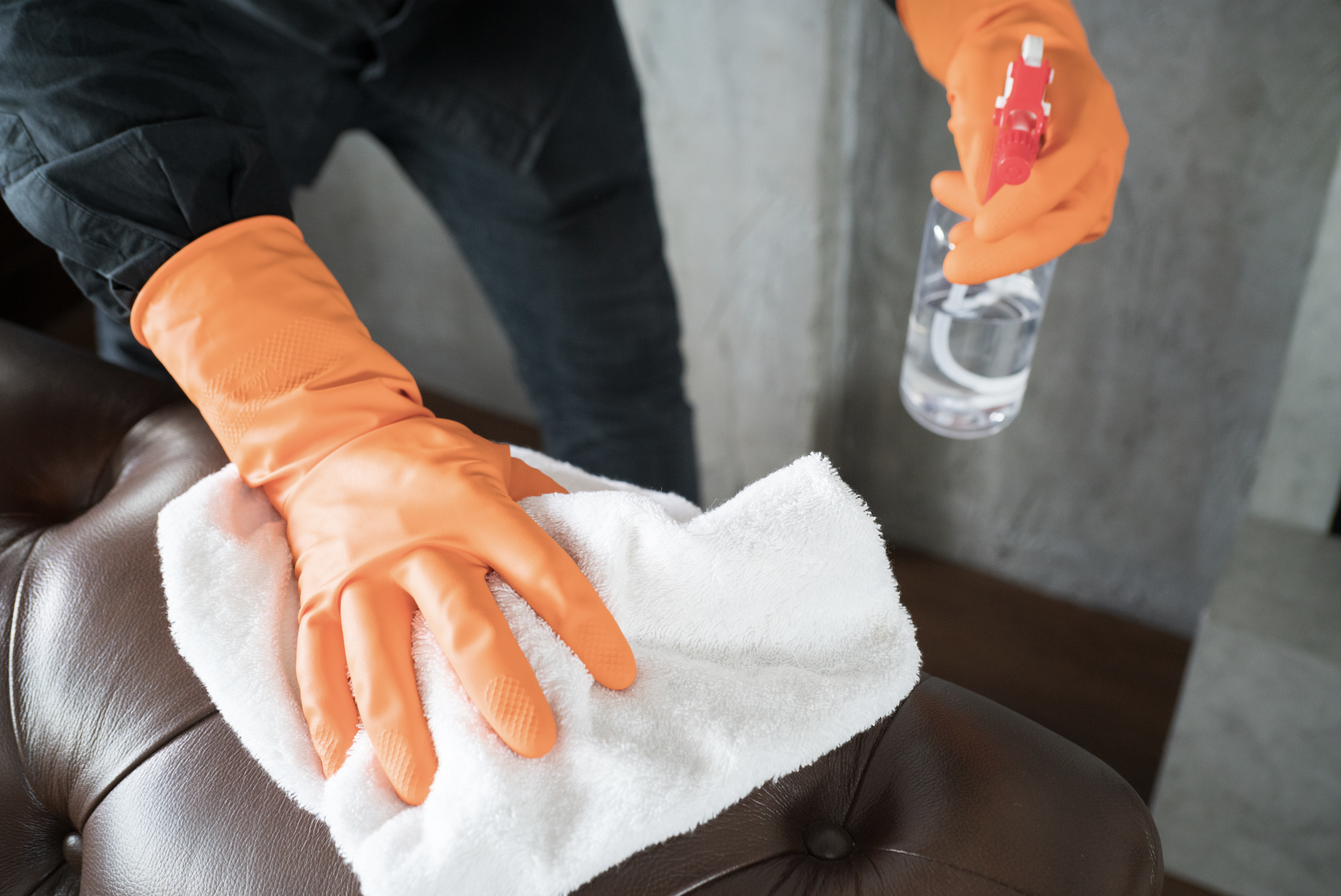Depending on what type of sofa you have, spot cleaning or an overall refresher can have many different steps. Always check what type of material your sofa is made of and make sure you have the proper cleaners and tools necessary to make your furniture gleam without damaging it. Once you know what kind of material you’re working with, follow our steps to getting out stains and cleaning built-up dirt or scuffs from this highly used piece of furniture!
Fabric Sofas
Fabric sofas are pretty easy to clean! First, use baking soda to remove odors and loosen stains. Sprinkle baking soda over your entire sofa (yep, we mean it!), using a mixture of water and baking soda on any visible stains to give it extra lift. Let sit for 15-20 minutes, and then vacuum the excess powder from the surface of your sofa.
Do a small, discreet spot test for your cleansing solution. Chemical solvents and sofas vary widely, so before you coat your precious sofa in something that could stain or gunk up the fabric, it’s better to test somewhere that isn’t easily seen before a more widespread cleaning. If the cleaner passes the spot test, it’s time to clean! Treat your entire sofa as per instructions on the label of the cleaner you chose. Next, can you remove your cushions? If so, many cushions also have zippered covers you can remove and toss in the washer and dryer or have dry cleaned. Check the label on your sofa for the best options.
Once you’ve treated your sofa, you need to dry it. Take a clean towel and wipe excess product from the sofa, then absorb moisture as best as you can with a microfiber cloth. From there, you’ll have to air dry it the rest of the way. This can take around 24 hours, and you can speed up the process by pointing a fan at your sofa.
Leather Sofa
The first step of cleaning your leather sofa is selecting the appropriate leather cleaner – there are different types of leathers (including faux leather), so it’s important to identify what cleaner is safe for your particular sofa. Either way, you’ll still want to first do a spot test somewhere inconspicuous to make sure the cleaner will safely work with your sofa. For a DIY leather cleaning solution, mix equal parts of vinegar and water in a bowl.
Once you’ve spot tested and confirmed the cleaner is safe, use a clean, soft towel to apply. Wipe the leather down in circular motions, paying particular attention to heavily soiled or stained areas. To dry, use the same method with a different, dry towel. For a faux-leather couch, like the one you would find at Aaron’s, the key is to use a mild cleanser. Anything too harsh will dry out and crack the synthetic leather. For both faux and real leather, apply a conditioning or protective treatment as the last step to keep your couch gleaming and safe until its next cleaning.
Microfiber (Synthetic) Sofas
Similar to the other types of sofas, your first step will be deciding what cleaner works best for the specific fiber of your sofa. If you’re not sure, clear rubbing alcohol is a perfect solvent for microfiber furniture.
Once you have your solvent – you guessed it – it’s time for a spot test. If your cleaner passes the test, begin cleaning your microfiber sofa by spraying and blotting. Don’t scrub! This can damage the sofa and push stains deeper – the opposite of what you want. Just wet the area, dab, and continue. Repeat until stains are gone (it may take a few treatments for deep or stubborn stains).
When you’re finished, air dry your sofa for at least 24 hours, aided by a fan if necessary. You may notice the fibers feel a little stiff after cleaning. This is normal and can be softened with a soft brush.
Sofas can be big purchases! Keep your investment in great condition with these tips and your sofa will look great for years to come, or even fetch you a nice chunk of change if you ever sell it. As long as you make sure your cleaners are compatible with your fabric or leather, cleaning your sofa is easy and well worth it!





